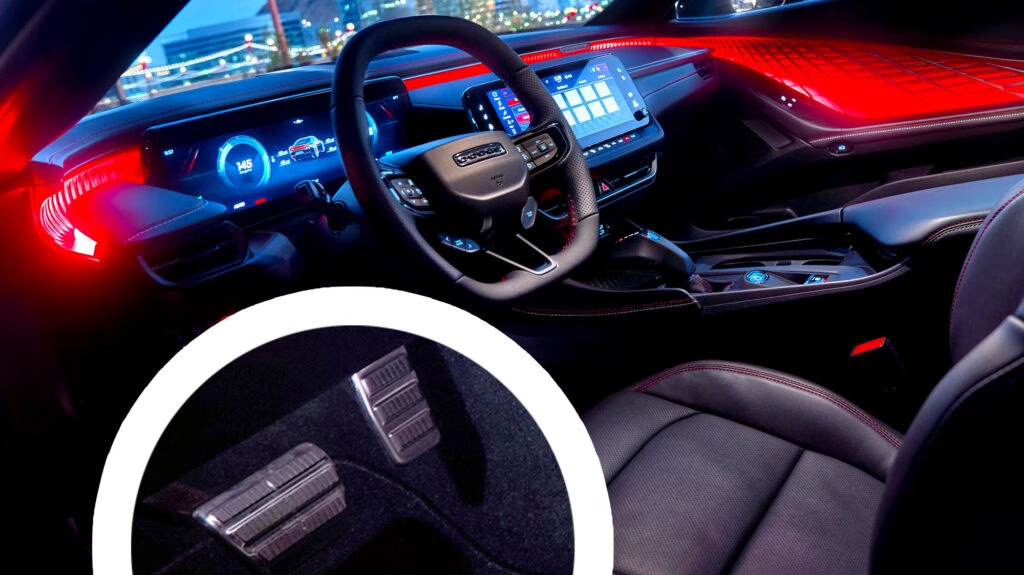Stellantis has recently shed light on a feature that’s been raising eyebrows: the “Drive By Brake.” This system is designed to prevent drivers from getting stranded due to unexpected issues with the accelerator pedal. But what does this really mean for drivers, especially in light of a recent incident involving a Dodge Charger Daytona? Let’s dive into the details.
What Happened with the Dodge Charger Daytona?
Imagine driving your car, and suddenly, it starts moving forward without you touching the pedals. That’s exactly what happened with a long-term test vehicle from Edmunds. The Charger Daytona began to accelerate slowly while flashing warning messages on the dashboard. Understandably, this led to a flurry of concerns about unintended acceleration—a scenario no driver wants to experience.
However, Stellantis quickly clarified that this wasn’t a malfunction but rather a feature known as “Drive By Brake.” This system activates under certain conditions when the vehicle detects a fault with the accelerator pedal, allowing for a controlled acceleration to help the driver maneuver safely.
How Does the “Drive By Brake” Feature Work?
When the Drive By Brake feature is engaged, the car limits the torque delivered by the powertrain, allowing for gradual acceleration—about 1 mph per second, as noted by the Edmunds tester. This means that while the car can gain speed, the brakes remain fully operational, allowing the driver to stop the vehicle at any time. It’s a safety net designed to prevent the car from stalling in potentially dangerous situations, like when traveling at highway speeds.
Stellantis has indicated that this feature isn’t exclusive to the Charger Daytona. In fact, it has been implemented across various models, including internal combustion engine (ICE), hybrid electric vehicles (xHEV), and battery electric vehicles (BEV). However, the company has been somewhat vague about which specific models include this feature, leaving many drivers in the dark.
Why Is This Feature Important?
The Drive By Brake feature serves a critical purpose: it helps prevent dangerous situations where a car might stall in the middle of traffic. Imagine being on a busy freeway and suddenly losing power. The ability to maintain a slow but steady speed can be a lifesaver, allowing drivers to navigate to safety rather than risking a complete stop in an active lane.
Stellantis has also noted that when the Drive By Brake is active, drivers will see notifications on the instrument cluster, including a “Service Engine Soon” message or a turtle symbol. This is intended to alert drivers that the system is engaged, but the clarity of these notifications has been called into question.
What’s Next for Stellantis and Its Drivers?
While the Drive By Brake feature is a smart safety measure, there’s a clear need for better communication from Stellantis. Drivers shouldn’t have to decipher cryptic symbols or rely on press releases to understand what’s happening with their vehicles. As the company reviews its in-vehicle messaging, it’s crucial that they prioritize clear, straightforward communication about features like Drive By Brake.
Moreover, the fact that turning the vehicle off and on can reset the system adds another layer of complexity. This is part of the system’s design, which checks for faults each time the vehicle is restarted. While this can be beneficial, it’s another detail that drivers may not be aware of unless they read the fine print.
The big takeaway? Understanding features like Drive By Brake isn’t just about knowing they exist—it’s about ensuring drivers are informed and empowered. Stellantis has a responsibility to make sure that its customers are fully aware of how these systems work and what to expect. As technology continues to evolve, so too should the communication strategies that accompany it.
So, if you’re a Stellantis driver, keep an eye on your dashboard notifications and stay informed about the features in your vehicle. It could make all the difference in ensuring a safe and smooth driving experience.

